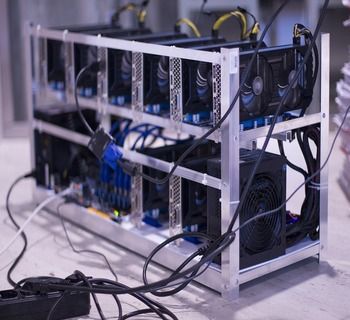We have seen our fair share of tech problems in the last few decades or so when the advent of technology can no longer be stopped and has started to dominate human life and the world at large. Gone were the days when only a few offices had access to the web. Nowadays, almost everyone can go online through their smartphones. We can’t live a day without browsing online or checking in on our social media accounts. We simply live and breathe technology but along with it comes a new breed of problems.
 It just serves as a reality check for us that the web is just as unsafe as the real one, if not even more. From simple bugs to ransomware, the net is filled with all these new breeds of dangers that can mess your life if you do not know any better. And we’re not even talking about the deep web here and all the criminals and pedophiles lurking there. We are simply talking here about bugs like ransomware that have been all over the web for the past year. Individual people and organizations felt the power of ransomware and it left them unable to do much with their devices until they pay the ransom. Even hospitals were badly hit and patients weren’t able to take their scheduled medications or treatments because the staff can’t access the computers.
It just serves as a reality check for us that the web is just as unsafe as the real one, if not even more. From simple bugs to ransomware, the net is filled with all these new breeds of dangers that can mess your life if you do not know any better. And we’re not even talking about the deep web here and all the criminals and pedophiles lurking there. We are simply talking here about bugs like ransomware that have been all over the web for the past year. Individual people and organizations felt the power of ransomware and it left them unable to do much with their devices until they pay the ransom. Even hospitals were badly hit and patients weren’t able to take their scheduled medications or treatments because the staff can’t access the computers.
If 2017 was the year of ransomware, then 2018 is the year of malicious cryptocurrency mining attacks as some cyber criminals turn away from encrypting files in the hopes of scoring a one-off payment in favour of infecting victim’s machines with cryptojacking malware and playing a longer game.
The premise is relatively simple: attackers infect a PC, server, smartphone or even IoT-connected device with malware, and secretly use the processing power to mine for the cryptocurrency.
Outside of extreme scenarios when too much power is used and damage is done to the machine, users don’t really think too much about why their computer is running a bit slower or that the fans are working slightly harder.
(Via: https://www.zdnet.com/article/why-cryptocurrency-mining-malware-is-the-new-ransomware/)
And seeing how creative hackers have become, one can’t easily tell when their devices are infected with a malware like ransomware. It can be that one email you didn’t know where came from that you opened out of curiosity and now your PC is out of commission. But the thing is right now it’s not just simple ransomware we are dealing with but cryptocurrency mining malware that is designed to use your PC’s computing power to help them mine more digital currencies like Bitcoin. We have seen how popular Bitcoin has become and people are investing on it like as if it is the stock market.
An old ransomware, indeed one of the first in the market, is trying to attack new victims as technology improves. Named Rakhni, the ransomware will be adding a crypto mining component that is able to be deployed on some computers.
Security experts from Kaspersky Lab spotted a new Rakhni version that affected some computers. The new ransomware is able to scan a user’s computer before infecting it and deploy the ransomware.
The process is very simple, if Rakhni finds a folder with the Bitcoin name on it, then it runs the ransomware module. There are no clear reasons behind that, but it may be related to the fact that a user may be storing private information such as private keys or passwords in this folder.
(Via: https://bitcoinexchangeguide.com/rakhni-malware-re-emerges-with-cryptocurrency-coin-mining-addition/)
The downside of bitcoin and alternative currencies mining is that they take too much computing power that the miners’ servers aren’t enough to keep them mining. Hence, we are seeing more of these malware that aim to tap on your computer’s power to help the miners do their mining job and keep on making more money than they can spend at the expense of innocent people who know very little about how these malwares work. Even old ransomware versions like the Rakhni resurface and are modified to take advantage of the vulnerable computer and not only infect like a ransomware does but also identify folders labeled as Bitcoin and prevents the owner access to their funds. This malware has also been identified in select locations, so most likely the culprits have been carefully choosing their targets.
Meanwhile, servers that have been compromised by these malwares need professional help https://www.harddrivefailurerecovery.net/raid-recovery/ to fix their devices for them so they can use it once again or give them handy tips https://www.harddrivefailurerecovery.net/the-harsh-realities-of-ssd-drive-failure/ so they don’t fall prey once more. It pays to be always wary when surfing the web because you’ll never know when these malware attacks will next strike and you wouldn’t want to find yourself the unfortunate victim when that happens.
